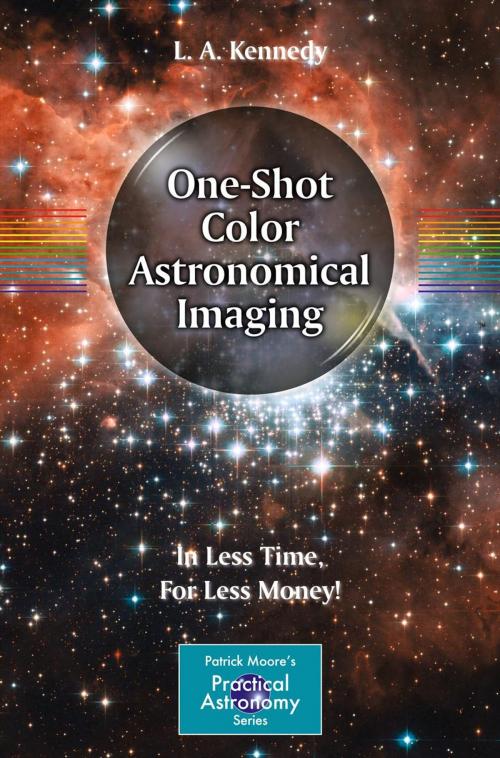One-Shot Color Astronomical Imaging
In Less Time, For Less Money!
Nonfiction, Computers, Advanced Computing, Engineering, Computer Vision, Science & Nature, Science, Physics, Astronomy| Author: | L. A. Kennedy | ISBN: | 9781461432470 |
| Publisher: | Springer New York | Publication: | April 5, 2012 |
| Imprint: | Springer | Language: | English |
| Author: | L. A. Kennedy |
| ISBN: | 9781461432470 |
| Publisher: | Springer New York |
| Publication: | April 5, 2012 |
| Imprint: | Springer |
| Language: | English |
This book shows amateur astronomers how to use one-shot CCD cameras, and how to get the best out of equipment that exposes all three color images at once. Because this book is specifically devoted to one-shot imaging, "One-Shot Color Astronomical Imaging" begins by looking at all the basics - what equipment will be needed, how color imaging is done, and most importantly, what specific steps need to be followed after the one-shot color images are taken.
What is one-shot color imaging? Typically, astronomical cooled-chip CCD cameras record only one color at a time - rather like old-fashioned black & white cameras fitted with color filters. Three images are taken in sequence - in red, blue, and green light - and these are then merged by software in a PC to form a color image. Each of the three images must be taken separately through a suitable color filter, which means that the total exposure time for every object is more than tripled. When exposure times can run into tens of minutes or even hours for each of the three colors, this can be a major drawback for the time-pressed amateur.
"One-Shot Color Astronomical Imaging" describes the most cost-effective and time-efficient way for any amateur astronomer to begin to photograph the deep-sky.
This book shows amateur astronomers how to use one-shot CCD cameras, and how to get the best out of equipment that exposes all three color images at once. Because this book is specifically devoted to one-shot imaging, "One-Shot Color Astronomical Imaging" begins by looking at all the basics - what equipment will be needed, how color imaging is done, and most importantly, what specific steps need to be followed after the one-shot color images are taken.
What is one-shot color imaging? Typically, astronomical cooled-chip CCD cameras record only one color at a time - rather like old-fashioned black & white cameras fitted with color filters. Three images are taken in sequence - in red, blue, and green light - and these are then merged by software in a PC to form a color image. Each of the three images must be taken separately through a suitable color filter, which means that the total exposure time for every object is more than tripled. When exposure times can run into tens of minutes or even hours for each of the three colors, this can be a major drawback for the time-pressed amateur.
"One-Shot Color Astronomical Imaging" describes the most cost-effective and time-efficient way for any amateur astronomer to begin to photograph the deep-sky.















